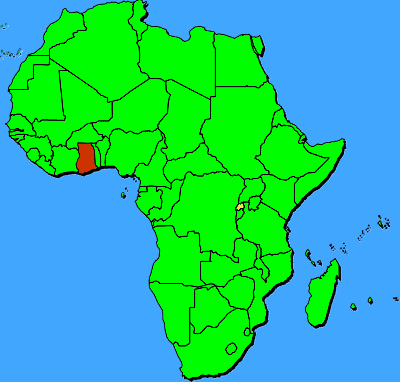
Circle the area on this map

B. Rwanda in Central Africa is one of the smallest countries on the African mainland. At 10,169 square miles, it is much smaller than Ghana’s 92,099 square miles. Both countries have large rural populations in hard-to-reach locations. Ziplline uses multiple sites in the countries to launch its drones.
C. Of 216 million cases of malaria worldwide in 2016, approximately 90 percent of the cases occurred in Africa. WHO hopes to vaccinate about 360,000 children across Ghana, Kenya and Malawi even though the malaria vaccine protects only about one-third of children who are immunized. But, others who get the shots are likely to have less severe cases of malaria.
D. The Portuguese, the Dutch, the British, the Danes, the Swedes, the French and the Germans built more than 50 trading fortresses along the Ghana coast. Many of the estimated 6 million slaves shipped from West Africa were held in those forts before being loaded into boats where about 15 percent of them died on the way to the Americas and Caribbean.
A. In the Atlantic slave trade, European cargoes like guns, ammunition, and other manufactured goods were shipped to Africa where they were traded for people captured in war. The captives were shipped to the Americas where they were traded for products of slave labor including cotton, sugar, tobacco and rum which were then shipped back to Europe.